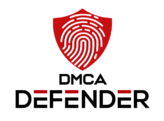Copyright for Publishers
Publishing in today’s environment means working within a variety of models. These models may entail the use of original content and may use republished, repurposed, adapted and recycled content. What does this mean in terms of copyright law? Since content is a key common denominator across models, publishers need to understand how copyright law protects that content. Key copyright issues include the nature of protected content; ownership of content; how that content is legally protected and what rights protect it; how to license and assignment content in order to monetize it and monitoring unauthorized uses of content. Proper copyright knowledge will ensure that you have maximum protection in the one constant in your various publishing models.
Three important copyright issues for publishers are:
- ownership of content
- using third party content
- protecting publications
The issues affect both print and electronic publishers of all sorts of content.
Copyright Ownership
In copyright, the ownership rule seems straightforward: an author is the first owner of copyright in her work. However, in an employment situation, the employer owns the copyright in her employee’s work. A consultant on the other hand owns the copyright in her writings unless there is a written agreement stating otherwise. Written agreements can change the ownership of copyright materials; licenses can provide permission to use materials that you do not own.
Third Party Content
Third party content is content in which you do not own the rights. Some typical examples of third party works included in publications are: images, diagrams, tables, charts, and photographs. When using third party content, it is always best to begin with the presumption that the content is protected by copyright. Online content and images found through search engines like Google Images are often protected by copyright.
Protecting Publications
Using a copyright symbol and including copyright information (plus a link to obtain permission to use your online publications) is one of the simplest ways to start protecting your content. Watermarking, digital rights management, and license agreements may all be helpful as well.
More info at Member profile: Harris has the answers on copyright laws
See Copyright for Publishers session at SIPA on 5 June 2022
